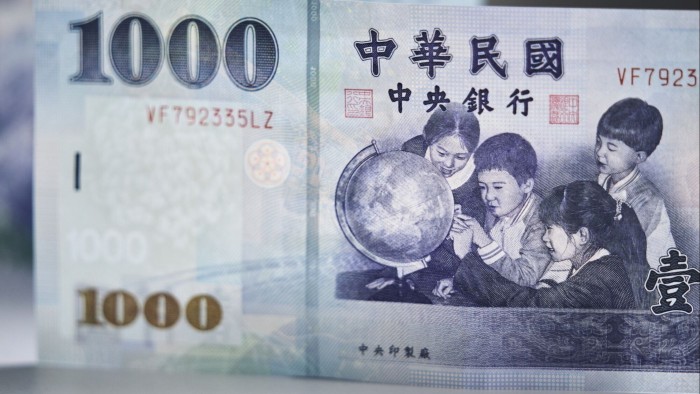Stay informed with free updates
Simply sign up to the Currencies myFT Digest — delivered directly to your inbox.
The Taiwanese dollar recovered its footing today, but as we’ve written before, what happens in Taiwan might not stay in Taiwan.
Understandably, there are still concerns that the recent dash for dollar hedges from Taiwanese life insurance companies is too late. JPMorgan analysts yesterday warned that Taiwan’s lifers will “be the major victims of TWD appreciation”.
However, as Joshua Younger and Brad Setser wrote in Alphaville earlier this year, there has been a “weird financial dance between Taiwanese life insurers and US homebuyers”, thanks to the boom in so-called Formosa bonds.
These are bonds issued in Taiwan by foreign companies, and denominated in dollars. About half of the roughly $300bn worth of Formosa bonds are callable, according to Barclays. In practice, as Younger and Setser explained, they function as selling US interest rates volatility and in the process probably helped dampen US mortgage costs.
Formosa bond issuance has slowed down a lot since the Fed started jacking up interest rates in 2022, but given the large stock of debt already issued, could the recent turbulence have an impact in the US?
Probably not, Barclays analysts argue:
The transmission mechanism that USD rate vol market investors are concerned about involves one in which Taiwanese insurers unwind their callable exposure, causing a scramble for vega buying. Such a chain of events strikes us as extremely unlikely. There are many potential responses to the currency move and it seems to us that selling exotic instruments such as long-dated callables is likely to be much further down the list.
Since the immediate risk is from the currency, the first order response is to hedge the currency risk. That may create further pressure for appreciation, but there are ways for the central bank to manage that, and it does not directly translate into either duration or vol impact in USD rates.
But most important, while long-dated callables account for a large amount of vega supply to the US vol market, the FX risk that they pose is likely quite small even relative to the other foreign currency holdings of Taiwanese lifers.
Price action in US interest rates derivatives also doesn’t indicate any mass unwind by Taiwanese lifers either. However, Barclays’ analysts reckon that there could still be a longer-term effect on the US bond market from the collapsing likelihood of the Formosa bond phenomenon flowering again.
That alone could ripple through the US rates complex. As markets price in the fading chance of a Formosa bond renaissance, it means interest rates volatility should be priced higher, and — all things being equal — add a little to US mortgage costs.
Or, in sellsidespeak:
One risk that long vol investors worry about is the risk of a sudden surge in vol supply from a re-emergence of callable issuance, which then causes long-dated volatility to fall. This could conceivably happen in an environment in which rates are a lot lower than current levels (say because of a major recession). We have considered this risk to long vega investors to be relatively low, given that any large enough rate move to cause this to happen would, at least initially, be vol-positive.
But the current episode may cause Taiwanese lifers to hesitate in investing in less-liquid instruments such as long-dated callables even when they do invest in USD assets in the future, especially now that we are moving to an environment where US tariffs will mean less demand for dollar instruments from foreign investors. So, for vol market participants, the risk of sudden drops in long-dated volatility from supply shocks should be lower moving forward.
As a second order effect, one reason why the skew in volatility in long expiries is so high (low strike volatility lower than high strike volatility) is because the market expects vol supply to come back in low rate scenarios. With this likelihood falling, there may also be a repricing of the long-dated skew to be more symmetric.
https://www.ft.com/content/7d105343-dbcc-49d7-9889-5db415252985


